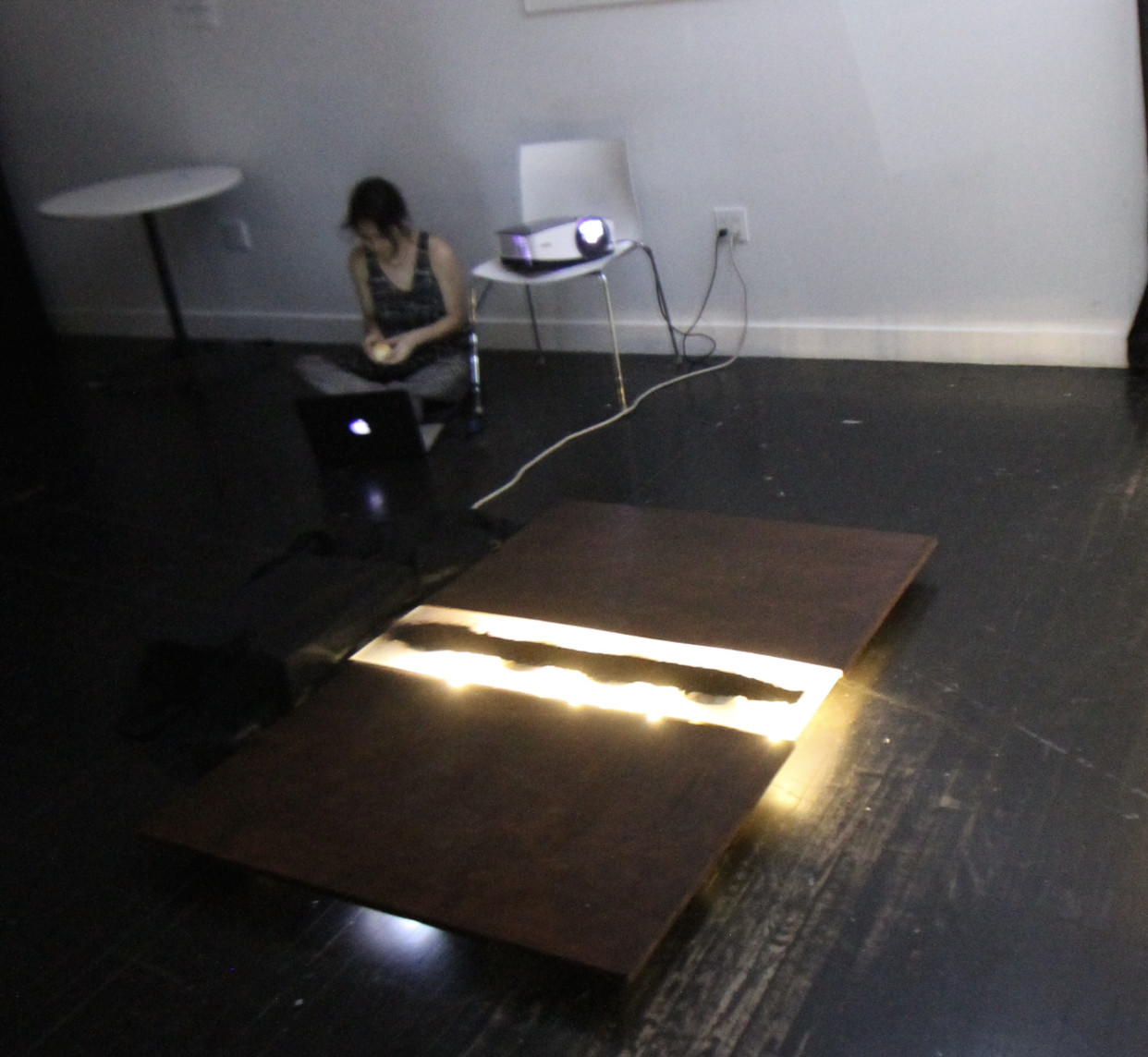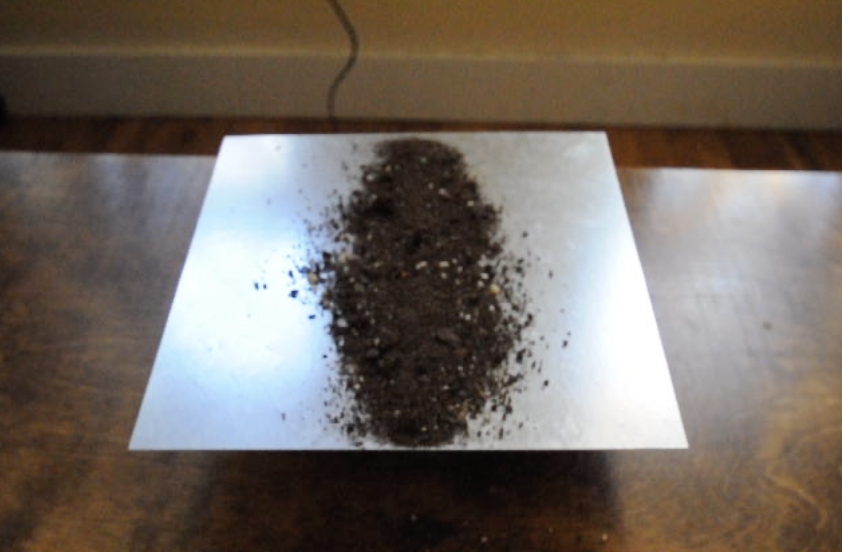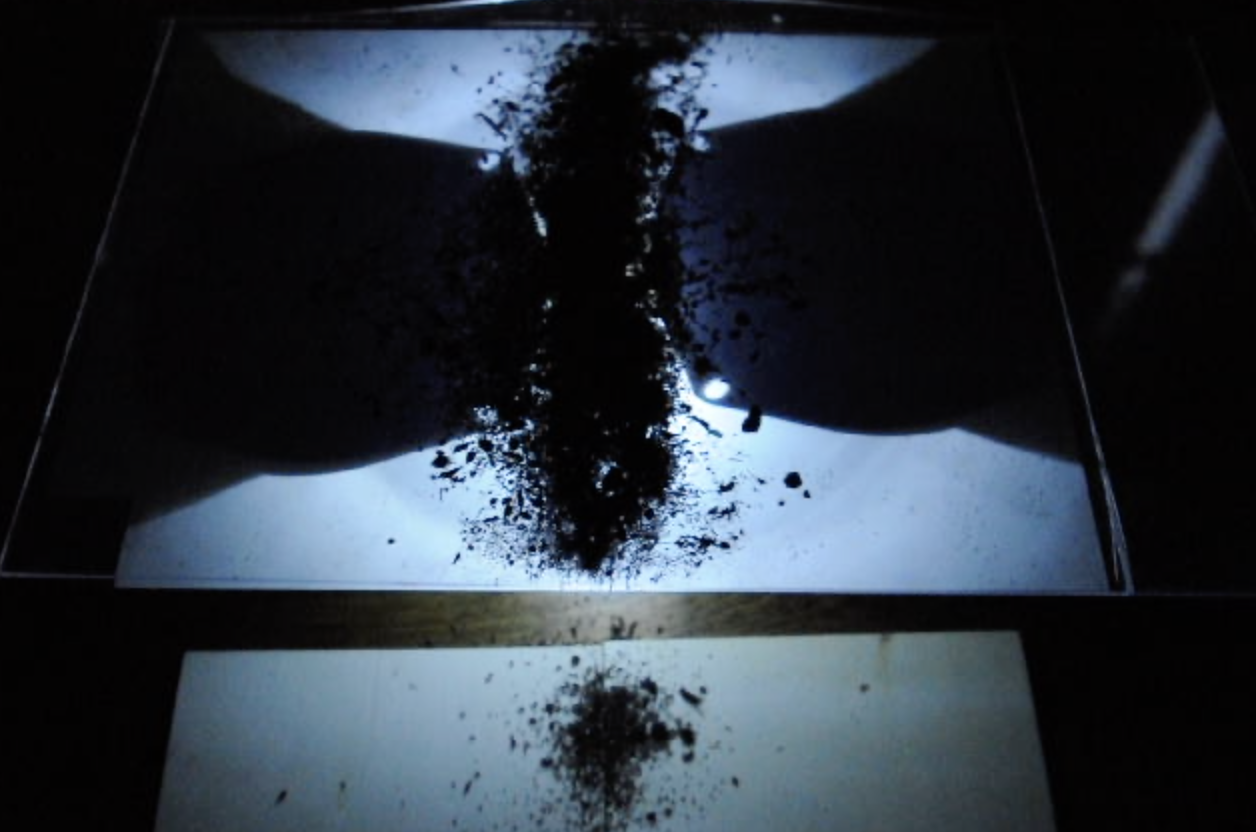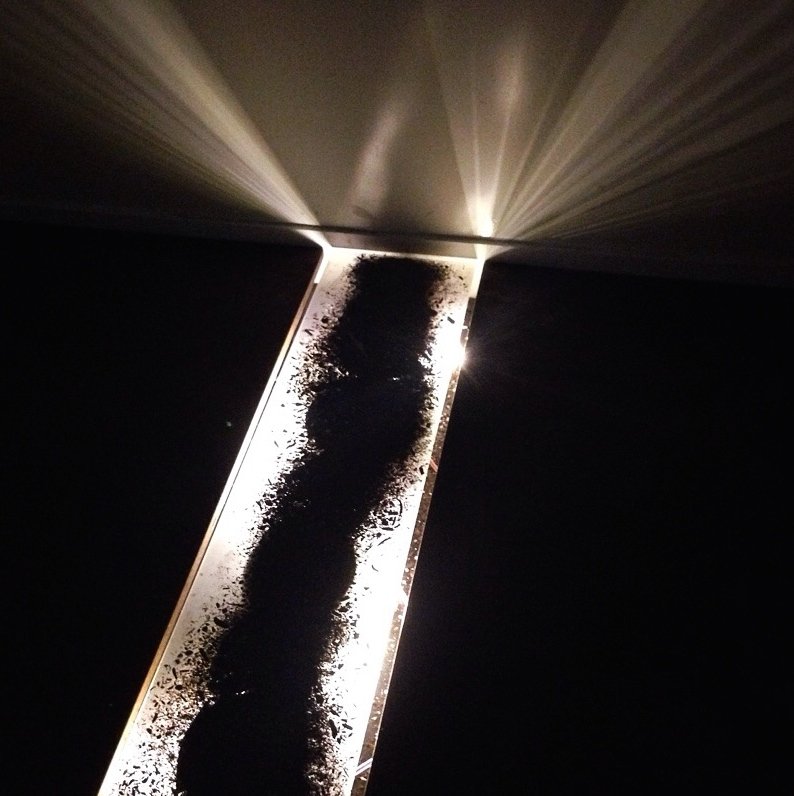Reflecting on past work
To reflect on my process and help me move forward with the current body of work, I’m writing about some of my past work.
This was my first time working with dirt and sound. There are two main reasons why I chose these elements and kept them in my work. One is more logical and the other one has become more spiritual.
I made this work in my first months living in Brooklyn. I was overwhelmed by city life, and by the amount of time I was spending looking at my screen to learn coding. I remember literally thinking that all I wanted to do was leave my screen, go to the park, and touch dirt. At the same time, I was reading A Natural History of the Senses by Diane Ackerman and The Eyes of the Skin by Juhani Pallasmaa, and found the beautiful essence of touch and why it is so important.
“The first emotional comfort, touching & being touched by our mother, remains the ultimate memory of selfless love, which stays with us life long” (Ackerman, 79)
“What is a sense of one’s self? To a large extent, it has to do with touch, with how we feel.” (Ackerman, 95)
“Touch teaches us that life has depth and contour; it makes our sense of the world and ourself three-dimensional” (Ackerman, 96)
I also learned how humans are very visual, and how distracting that can be.
“Vision and hearing are now the privileged sociable senses, whereas the other three are considered as archaic sensory remnants with a merely private function, and they are usually suppressed by the code of culture.” (Pallasmaa, 16)
“The eye has certainly produced imposing and thought-provoking structures, it has not facilitated human rootedness in the world.”(Pallasmaa, 19)
Therefore, I decided to create an experience based on touch and I discovered that I could use powerful sound vibrations to trigger this sense. The attempt was to inspire awareness of touch and oneself. Those are the logical reasons why I chose those materials. Now I also see them representing fluidity, our connection to nature, invisible energy, and beautiful inner power.
Back then, I wrote a paper on all my findings and reasons for this piece. You can read it here.
Some of the artwork that I dove into included The New York Earth Room by Walter De Maria, The Blind Theater by Stahl Stenslie, Whisper: Wearable Body Architectures by Thecla Schiphorst and Susan Kozel, etc.
Border crossing fortune tellers, 2015
This was a very quick project, but important. I had to create something fast and the theme that came up was the US-MX border. I grew up in Tijuana, Mexico, and during high school I crossed this border everyday to commute between my school and my house. I started doing artwork about this subject during my BFA, and there was still something left unsaid. For this project, I ended up with a kid’s paper game that reminded me of my experience as a kid to crossing the border.
This piece grew from the two pieces above. I took my learnings from Rootedness and connected it with the US-MX border concept. It was one of the most technically challenging pieces, but I loved how I could connect new technology——wires, code, speakers——with something as ordinary as dirt and make it look beautiful.
This was the first time I used dirt as a symbol for boundary, in this case a physical boundary. Since dirt is part of nature, it is malleable and has the ability to change for good, which has been and still is my desire for political borders. The attempt was to expose this malleability of the border so as to tell the audience that our perceptions are flexible and we create the border environment. I wanted to destroy the illusion that the border defines inhabitants of each side and that each side exists in isolation from the other.
You can find my final paper on this project here.
Some of the artwork that I looked into included Boundary Functions by Scott Snibbe, The Forty Part Motet by Janet Cardiff, Papers, Please by Lucas Pope and Passport by Erika Harrsch.
This was the most time consuming piece I’ve done so far. It took one year of focusing on it, and I had three people helping me create different aspects of the piece. It was born from Rootedness and Organic Border. I kept exploring the US-MX border, but now I connected it to myself. At the beginning of the process, I was trying to figure out how to “touch” or “change” the border fence all the way from Brooklyn. Later on, I realized I could go to the fence itself and work on it. So this time there was no symbol for the border, I worked with the fence and I embedded speakers in it playing the sound of my breath. A lot of exploration and thinking went into this piece, and all of it is explained in my master’s thesis.
What I remember most about this piece was the sense of peace I had during the process and at the end. I felt very in-sync with what I was creating——touching the fence, learning to breathe for a long period of time, talking with people about it, and truly being in myself——and at the end I had the sense that I had made peace with that part of my identity. There was no more confusion and resentment. It is still a very personal piece and I understand how some people only see it as a political piece, but that is okay with me. I think it is beautiful that a piece can be seen from various perspectives. I believe when artists manifest work, they are not only manifesting what is inside of them but also reflecting what others are going through.
This piece gave me the confidence to keep doing artwork and call myself an artist.
Some of the artists I looked into include Lygia Clark, Francis Alys, Ana Mendieta, Doris Salcedo, etc.
This was the first piece I created after grad school. I had more flexibility since I did not have to include any new technology, and I felt more like using raw materials. The only thing left about the political border that I still wanted to address was the piece of the border fence that is exactly in the neighborhood where I grew up, Playas de Tijuana. I always found intriguing the beautiful and ridiculous juxtaposition of the ocean waves going through the metal and wooden poles of the border, so I took those elements and created an installation.
With this piece I discovered other raw elements I liked working with, like water, sand, and algae, as well as time because the piece required the rusting of a metal chain. This was when I start thinking of using photography and video to capture the rusting process. I felt like a kid while I was collecting the raw materials, and since then I’ve been looking for that sensation while working.
I loved working with water and what it means to me. It is part of the reason why I’m working with it again in my current piece.
This is the first piece in recent time where I’m not addressing the political border anymore. I was tired of that subject, I felt I had expressed it all, and with Trump as president, I did not want to spend energy and emotions on the subject.
I started going to therapy again and thinking about how I have “boundaries” within myself and how these affect my everyday life. My therapist suggested researching my family since it might help me figure out some parts of myself. That is how I end up recording my mom and my grandmother. I also thought how precious it was to store my grandma’s voice and stories for the future when she’s no longer physically here.
I decided to use dirt because I was not done exploring it. I was curious to see how my symbol of a boundary could transfer to this new piece. I ended up using dirt to represent the three of us——my grandma, my mom and myself——as well as how our stories and energy connect us as one. The shapes that I created with the dirt were inspired by tantric paintings. It seemed appropriate since it was a very reflective time for me.
This piece reminds me of how I embedded my ancestors stories in the ground where I walk everyday.




























